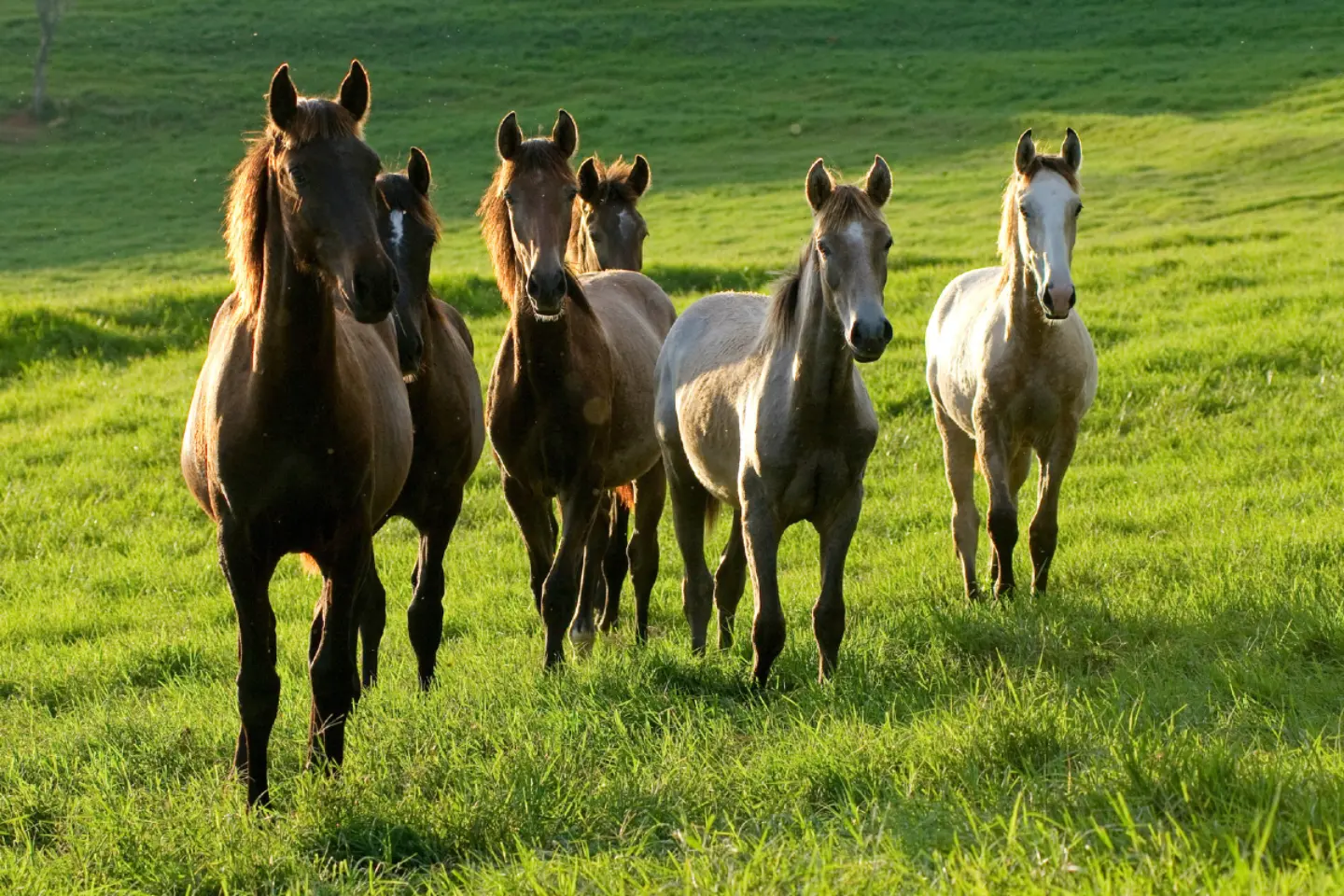Horses have captivated humans for millennia, their strength, beauty, and companionship making them an integral part of many societies. What we commonly see today in fields, stables, and arenas around the world are domesticated horses, but their ancestral roots are wild and fascinating. Let's delve into some remarkable facts about horses that may have trotted under your radar.

Historians believe that the domestication of horses occurred around 4000 to 3500 BCE in the steppes of Eurasia, near present-day Ukraine, southwest Russia, and west Kazakhstan. These majestic animals were initially used for milk and meat and gradually transitioned to becoming beasts of burden, revolutionizing transportation and warfare.
The Przewalski's horse, often referred to as the Mongolian wild horse, is the closest living wild relative of the domestic horses we know today. Remarkably, after once being extinct in the wild, a successful reintroduction program has enabled these horses to roam free in their native habitats once again, illustrating the resilience of nature and the effectiveness of conservation efforts.
Horses are known for their speed and stamina, but did you know they can sleep both lying down and standing up? This ability is thanks to a special locking mechanism in their legs called the "stay apparatus", allowing them to relax their muscles but remain on their feet, ready to flee from predators at a moment's notice.
Their eyes are another marvel. Positioned on the sides of their heads, horses have a nearly 360-degree field of vision. With only two blind spots, directly in front of and behind their bodies, horses are keenly aware of their surroundings. However, this placement does mean they have less depth perception, which is why you'll often see a horse raise its head to look at something in the distance.
The communication of horses is another captivating area. Horses are known to communicate with one another through facial expressions, vocalizations, and body language. One study found that horses have at least 17 distinct facial movements, a range comparable to humans and chimpanzees. These movements can express everything from pain, stress, relaxation, to irritation or excitement.
Moving on to their remarkable manes and tails, these parts of a horse's body serve as more than just ornamentation. The mane provides a cover, shielding the neck from inclement weather or biting insects. The tail is a further line of defense against pests, effectively swatting flies away.
Horses also have an incredible memory, often recognized as being among the most powerful in the animal kingdom. They not only recognize individual humans and horses they've bonded with but can also remember complex routes and trails as well as locations of food and water sources.
Their hooves are extraordinary feats of evolution. The majority of the time, a horse bears all its weight on a single toe on each foot, and the hoof is the equivalent of a human's fingernail, constantly growing and requiring regular trimming and maintenance. Farrier work, which includes shoeing and trimming, is therefore not just cosmetic, but also essential for a horse's health.
Equine speed is something that most people know horses for, with the fastest recorded speed of a racehorse being 70.76 kilometers per hour (43.97 miles per hour), registered by a Thoroughbred named Winning Brew. However, it's not just racing where horses excel; in dressage and show jumping, they display incredible flexibility, control, and spatial awareness, akin to ballet dancers.
In addition to their physical abilities, horses have been shown to have therapeutic effects on humans. Equine-assisted therapy programs have gained momentum across the globe, providing support for individuals with physical, mental, and emotional challenges. The gentle nature and rhythmic movement of horses have been shown to improve cognitive function, mood, and overall well-being in participants.
The diversity within the equine world is also something to marvel at. There are more than 350 breeds of horses, each with its own unique attributes, from the tiny Falabella ponies to the majestic Shire horses, known as gentle giants. These differing breeds have been developed over centuries to fulfill various roles, from hauling and plowing to racing and performing.
Lastly, the horse has left an indelible hoofprint on the cultures and histories of civilizations across the globe. They feature heavily in mythology, from the eight-legged steed of Odin in Norse mythology to the centaurs of Greek mythology. Horses have served as muses for countless artists, writers, and filmmakers, and continue to inspire us today.
From their wild origins to their domesticated present, horses continue to be one of the most intriguing and respected animal companions in human history. Whether through their physical prowess, their deep emotional intelligence, or their storied past, horses continue to captivate and charm us with their myriad of surprising features and abilities. So the next time you see a horse quietly grazing in a field or performing in grand style, remember these amazing facts and appreciate the depth and breadth of what these incredible animals offer.
